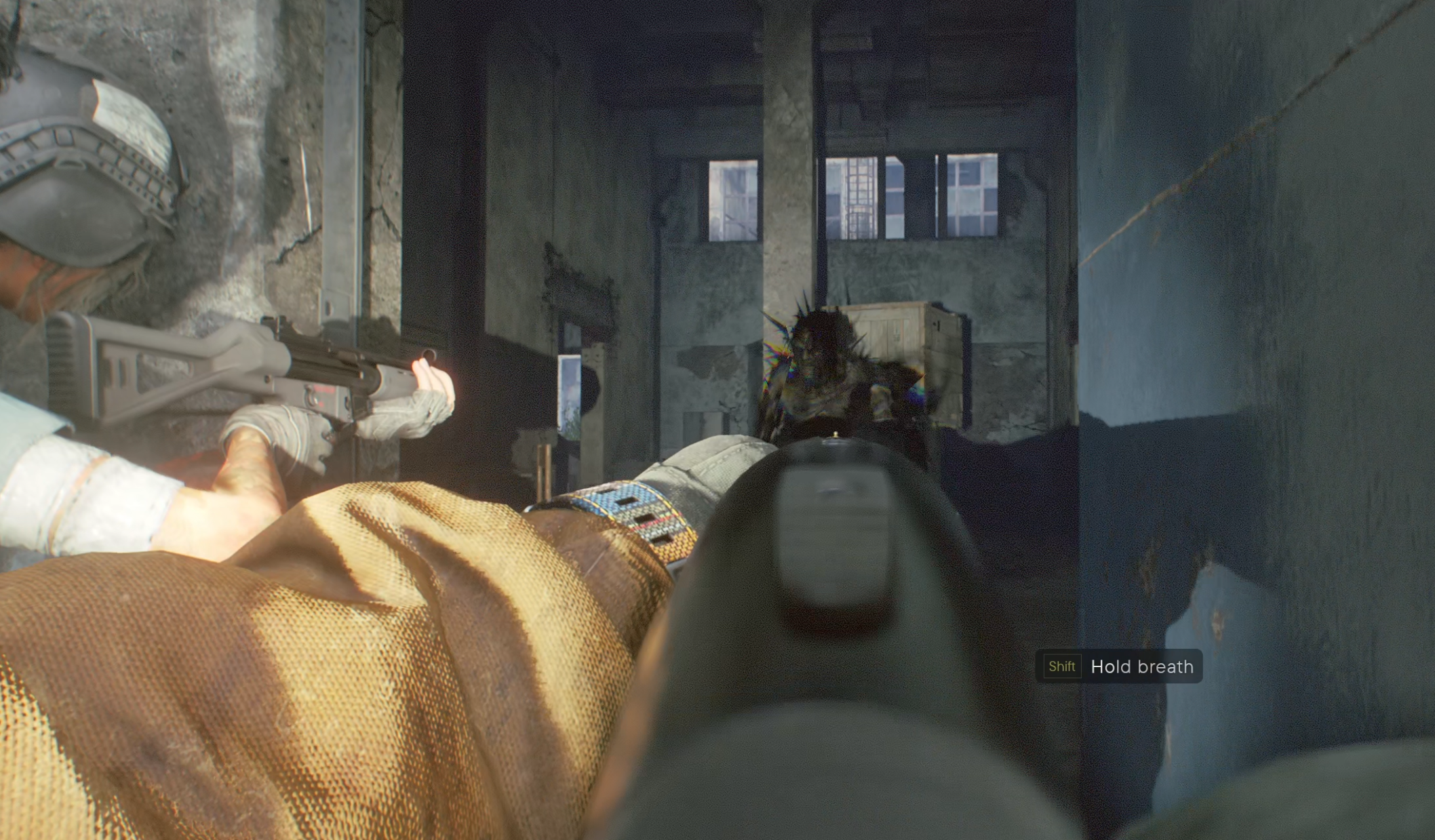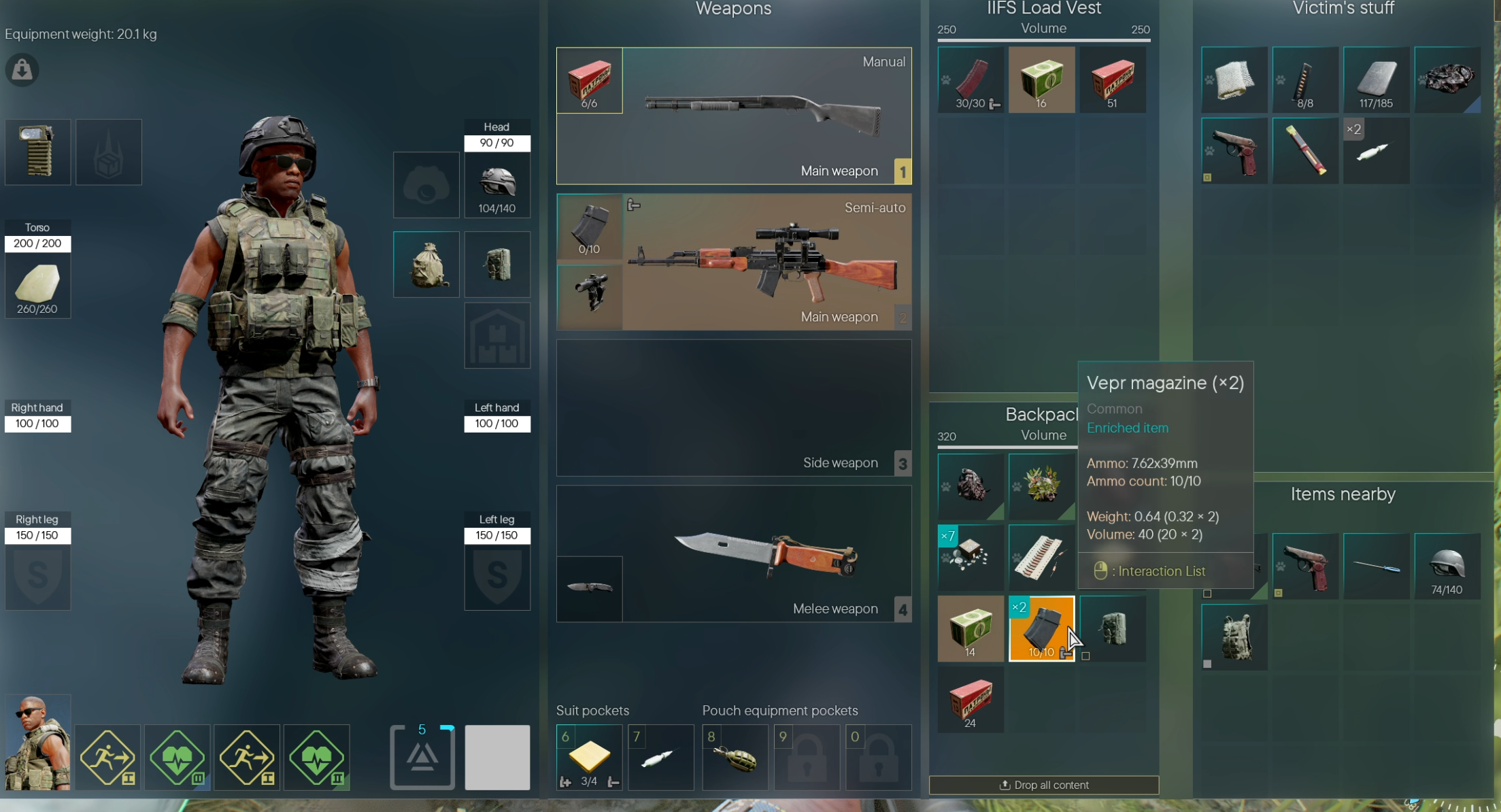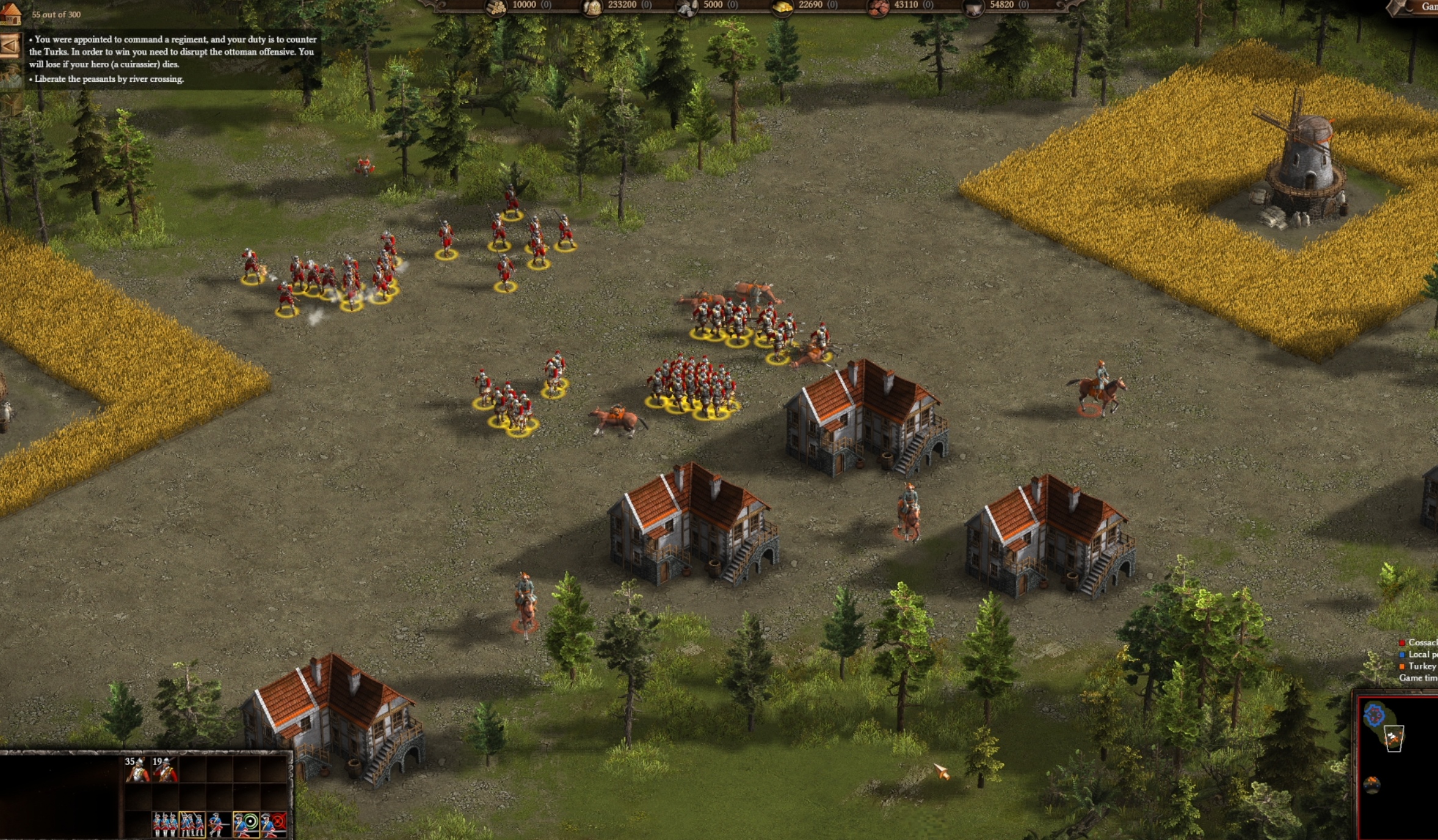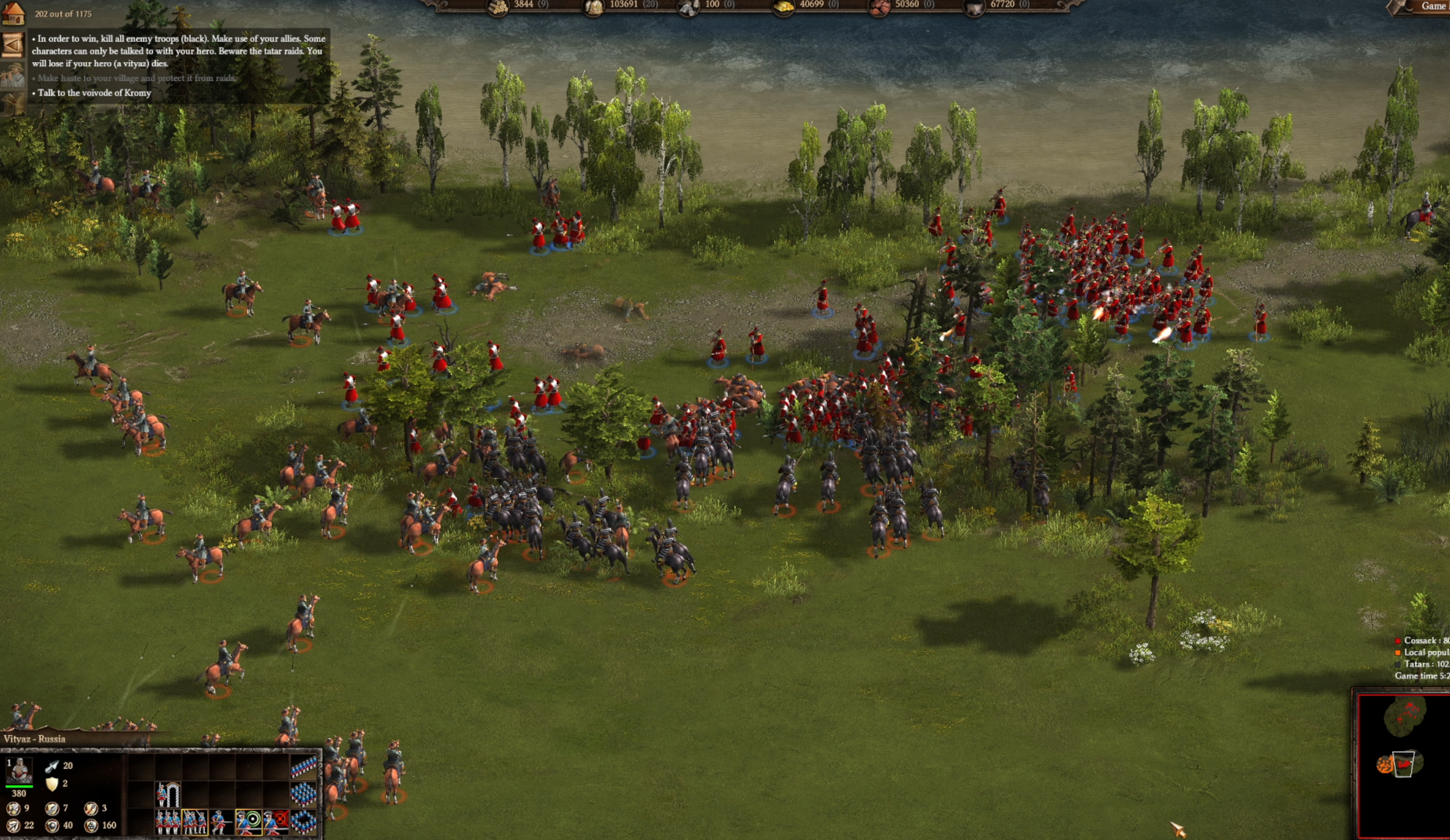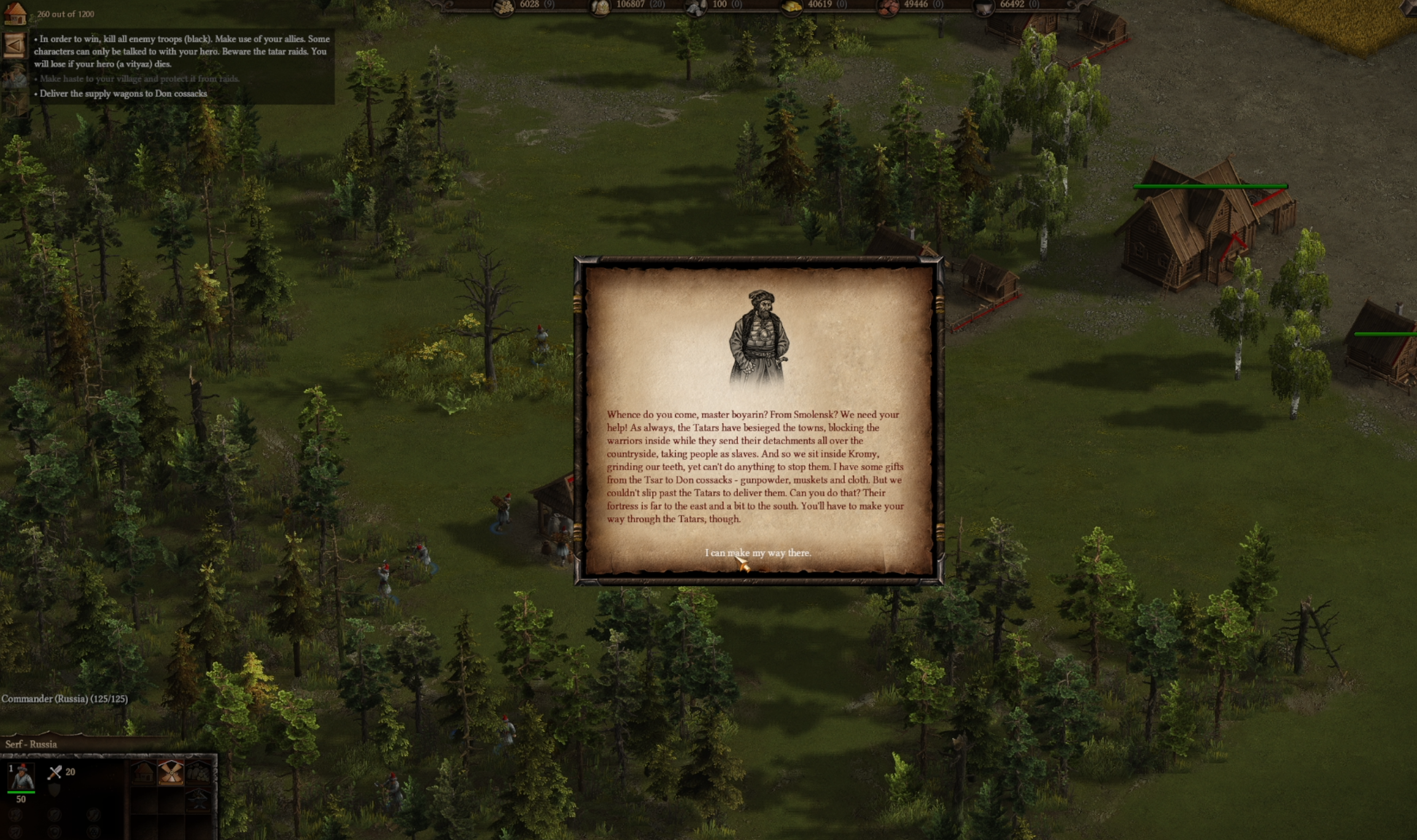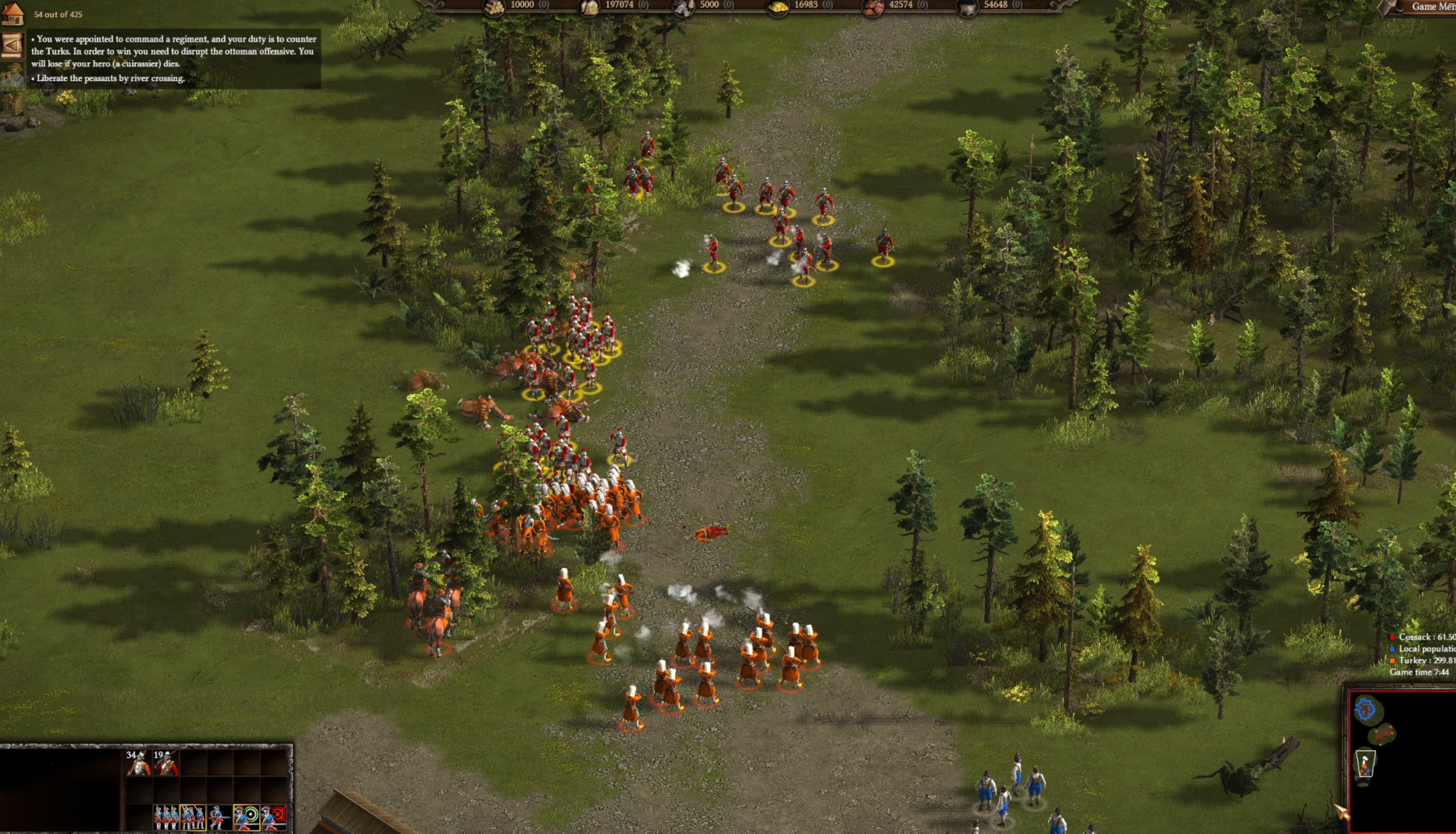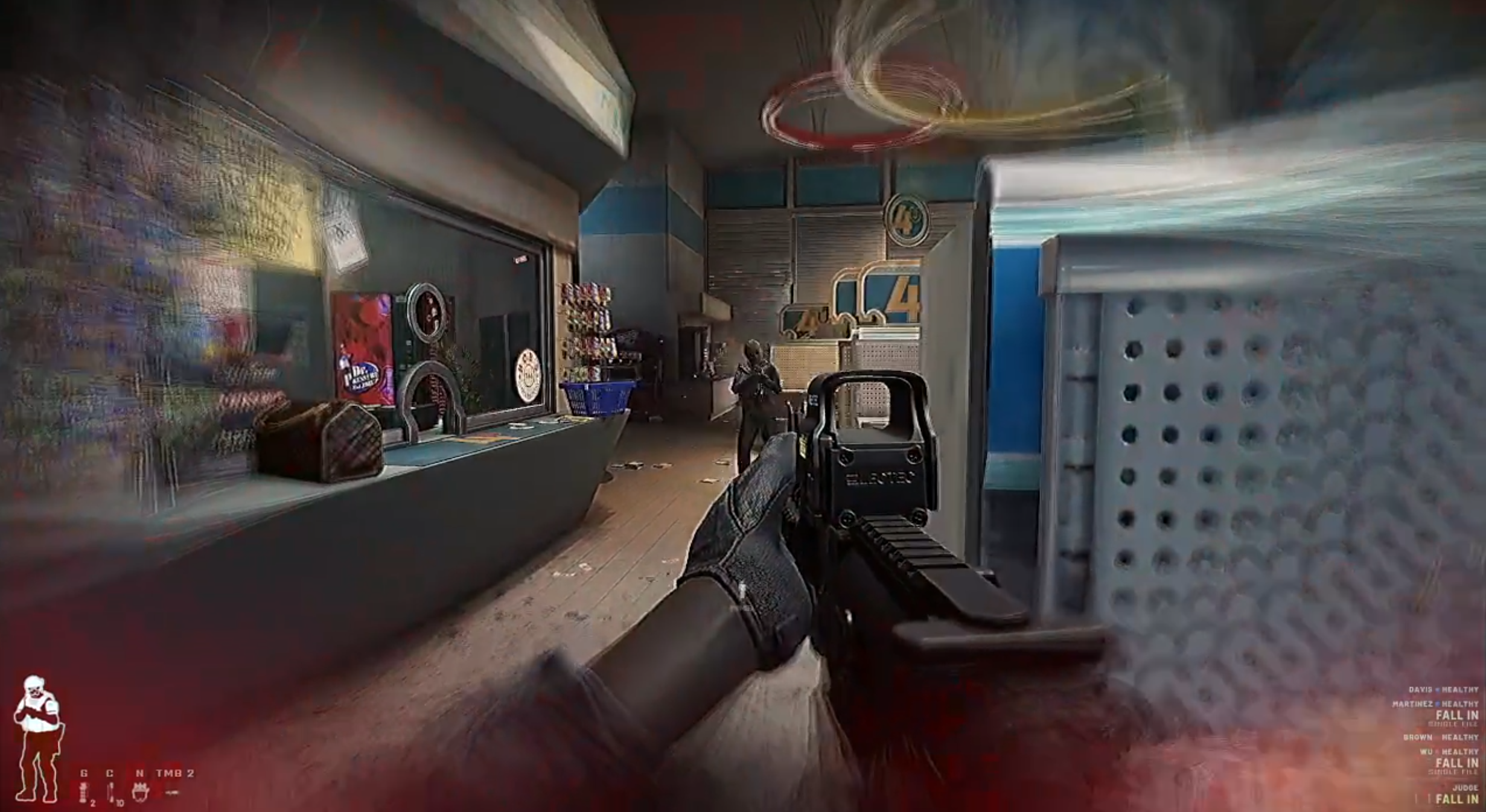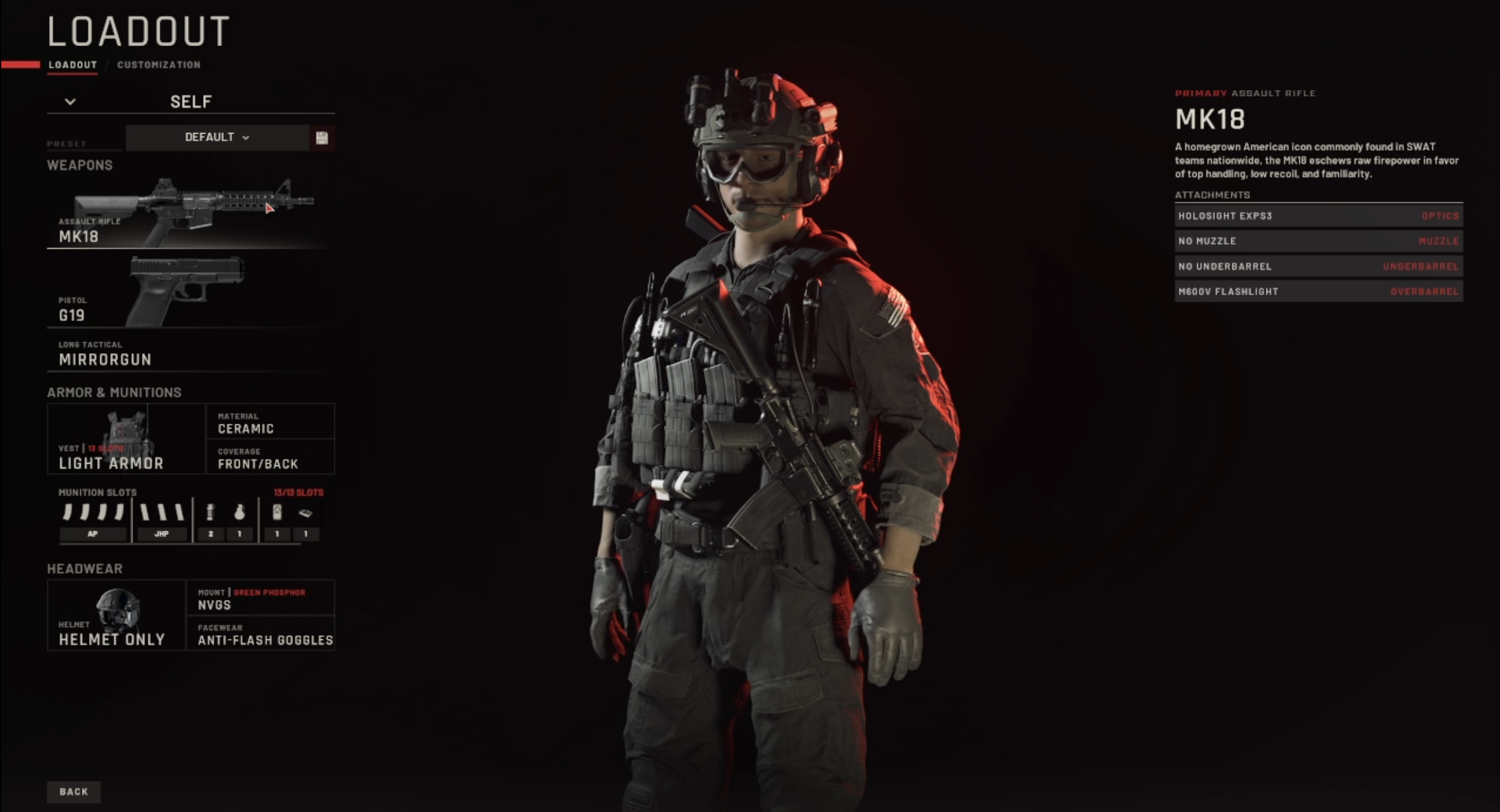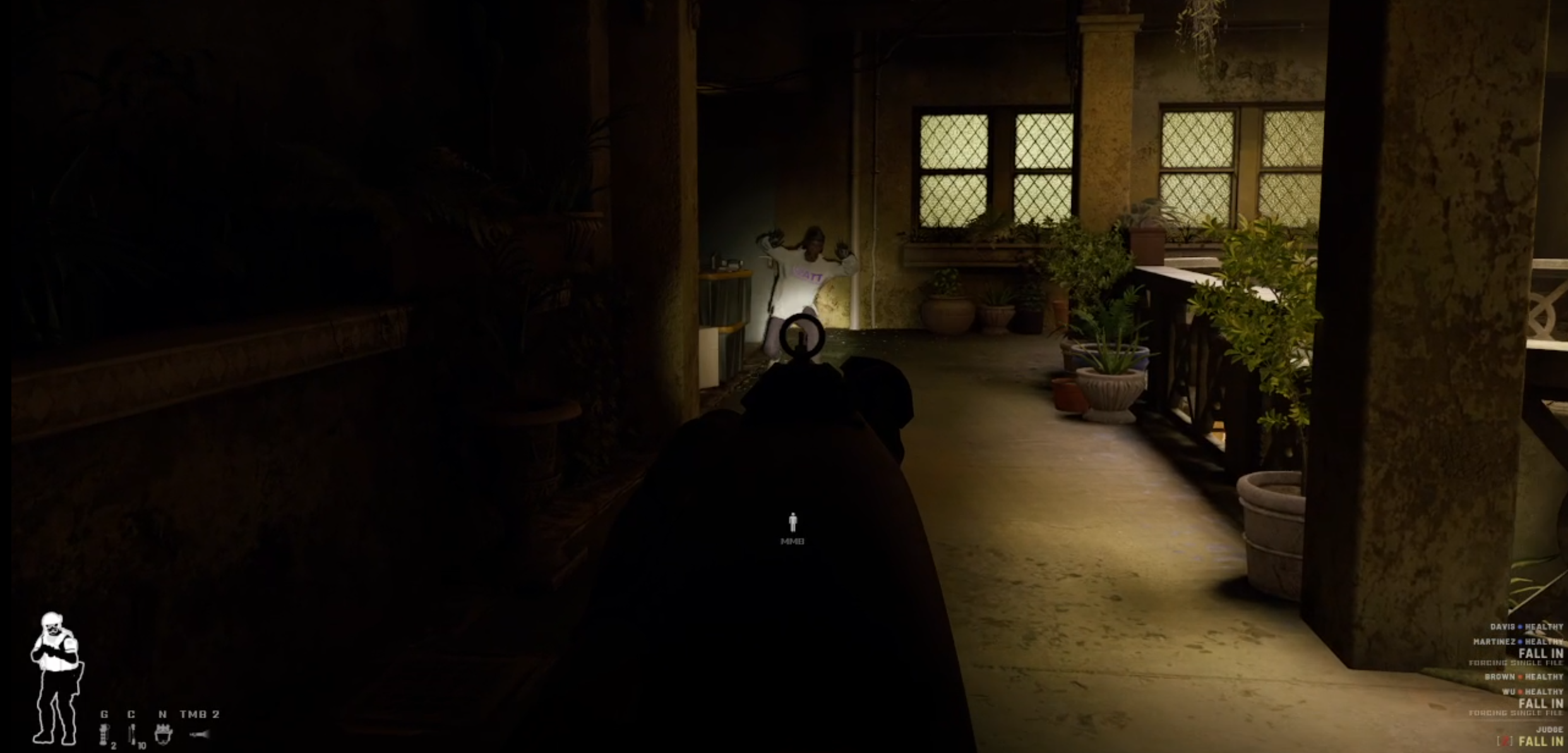Systemic War: When HOI4 Meets Broken Arrow — A First Look at the Steam Demo
If you’ve ever wished you could fight the battles you wage in a grand strategy game — or wanted your RTS skirmishes to actually matter on the world stage — then the demo for Systemic War (Steam, October 2025) might scratch that itch. It’s rough, rough enough to make you cringe in places, but it’s also one of those rare experiments that insists you pay attention. Here’s my take on it after an hour in the trenches.
If you’ve ever wished you could fight the battles you wage in a grand strategy game — or wanted your RTS skirmishes to actually matter on the world stage — then the demo for Systemic War (Steam, October 2025) might scratch that itch. It’s rough, rough enough to make you cringe in places, but it’s also one of those rare experiments that insists you pay attention. Here’s my take on it after an hour in the trenches.
You may also be interested in:
🎯 What is Systemic War?
At its core, Systemic War aims to fuse two strategy genres:
A grand strategy layer (a la Hearts of Iron IV) where you manage nations, economies, diplomacy, and logistics.
A modern-era RTS mode (think Broken Arrow / WARNO) where frontline encounters are fought in real time.
Its Steam page describes it as a modern grand strategy game spanning 2008 to 2025, where your strategic choices are tested in RTS battles that alter the course of the war. Steam Store
The demo is available as part of Steam Next Fest, free to try for a limited time.
🧩 My Demo Experience: Rough, But Intriguing
Let me be clear: the demo is very, very rough. It’s filled with placeholders, limited functionality, UI quirks, and parts that feel more like a concept than a polished build. But despite all that, there’s something compelling about it that kept pulling me back.
Here’s how it plays out:
Grand Strategy Layer
The strategic layer is minimal in the demo. You can move divisions, manage frontlines, and deploy artillery support. That’s about it.
Infrastructure, production, and macroeconomic systems (that promise to exist) are barely functional here.
You can mostly ignore the RTS battles if you choose — the game will “auto‑resolve” them. But that feels like throwing away a teaser of what the project could be.
RTS Battles
When two opposing units collide on the strategic map, you have the option to dive into a real-time battle.
In the battles, you control modern hardware: tanks, infantry, some support units, and artillery. I didn’t see naval or air support in this build (though they might be planned).
The battlefield feels like a specialized Total War style map: certain cities get their own layouts, terrain matters, and objectives aren’t always obvious. There’s an option to not micromanage and just issue high‑level priorities instead.
So, yes — it feels like HOI4 letting you scratch that RTS itch.
🔍 Pros & Cons
What Works (Even in This State)
Ambition & Concept: The idea of marrying grand strategy and tactical RTS in modern warfare is bold and rare. That duality is the heart of why this demo stuck with me.
Setting & Stakes: A modern-day theater means the battles feel weighty. You're not moving abstract units on a map — you're dealing with places people recognize, weapon systems that feel current, and strategic decisions with lived-world implications.
Optional Depth: You can bypass the RTS entirely, which gives flexibility depending on how much micromanagement you want.
What Needs Work
Unfinished Systems: The grand strategy systems barely exist right now, making much of the experience feel hollow.
Polish & Usability: UI bugs, placeholder text, and rough balancing impede the show‑piece enough that it can break the mood.
Limited Scope: No air or naval forces (in demo), and battles lack some of the force multipliers you’d expect in a modern war game.
🧭 Why You Should Watch This Game
Even if the demo is too rough to fully recommend now, here’s why I’m watching it:
It dares to bridge two genres that often exist in isolation. If done right, success or failure in a single battle could ripple into state-level outcomes.
It’s set in modern times — a bold move. That opens up tensions, technologies (drones, EW, cyber), and conflicts that feel relevant.
The scaffold is already there: real maps, 150+ unit types, diplomacy, and infrastructure promises. The challenge now is filling in the skeleton.
✅ My Verdict (For Now)
Don’t expect a finished product. Don’t expect deep strategy systems yet. But do expect potential. If you like watching ambitious strategy experiments, this demo is worth at least one or two hours of curiosity.
You may also be interested in:
Nuclear Option Review: A Tactical Flight Sim You Didn’t See Coming
Nuclear Option by Shockfront Studios arrives as a compelling mix of action and simulation—a “flight sim lite” that squeezes strategic nuclear warfare into dogfights, missiles, and broad battlefield control. In its early access stage, it’s already making waves among fans seeking something between arcade ease and hardcore realism. With a modest price tag and surprising depth, it aims to scratch the flight‑combat itch in a way few games dare to try.
Nuclear Option by Shockfront Studios arrives as a compelling mix of action and simulation—a “flight sim lite” that squeezes strategic nuclear warfare into dogfights, missiles, and broad battlefield control. In its early access stage, it’s already making waves among fans seeking something between arcade ease and hardcore realism. With a modest price tag and surprising depth, it aims to scratch the flight‑combat itch in a way few games dare to try.
In this review, I’ll break down what works, what doesn’t (yet), and whether this nascent title deserves your attention right now.
Nuclear Option is a semi-realistic, single and multiplayer air combat simulator developed by Shockfront Studios. Set in a fictional near-future conflict, it blends accessible flight mechanics with tactical battlefield planning, dynamic combined-arms warfare, and the thrilling power of deployable nuclear weapons. Players can fly a wide variety of fictional but plausibly-designed aircraft—from nimble fighters to heavy bombers—across open, large-scale maps while engaging AI and player-controlled units in missions that range from surgical strikes to full-scale escalation wars. With mission editors, modding support, and a low barrier to entry, it offers a refreshing alternative to grind-heavy or overly complex sims.
First Impressions & Core Vision
From the moment you load up Nuclear Option, it’s clear the developer had a vision: small, focused, and bold. The idea of combining flight simulation elements with tactical nukes feels risky, but the execution is audacious. The game lets you fly near‑future aircraft, engage air, ground, and naval threats, and yes—unleash nuclear weapons when the battlefield allows it.
That said, it’s still early access; some systems are rough around the edges, but the foundation is very promising.
Firing off a couple of air to ground missiles while evading an incoming air to air missile in the Compass in Nuclear Option.
Flight & Control Mechanics
One of Nuclear Option’s strongest points is how it handles flight controls: it bridges the gap between arcade and full sim in a satisfying way.
The game supports a variety of control schemes—gamepads, keyboard + mouse (virtual joystick), and even HOTAS setups.
While the keyboard is used for a few critical commands (e.g. ejection, map navigation), the bulk of handling falls to your primary flight input.
The learning curve is real: takeoffs and basic maneuvers feel manageable, but advanced moves—high speeds, tight turns, managing g‑forces—demand finesse.
The damage model is detailed: each aircraft comprises dozens of simulated parts, and damage to wings, control surfaces, and even internal instruments can cripple your performance.
In short, it’s forgiving enough to let you get into the air quickly, but punishing enough that sloppy flying gets punished—just the right balance for many players. It is easy to learn, but has the depth you would expect from a game about futuristic combat aircraft.
Aircraft, Units & Strategic Layer
Roster & Unique Roles
The game offers a variety of craft, each with distinct strengths and quirks. Here are a few, and more are being added all of the time.:
Cricket — light, low speed, stealthy
Compass — multirole, good all-around loadouts
Revoker / Ifrit / Vortex — faster jets, better air-to-air capability
Darkreach — the strategic stealth bomber, your main nuke delivery platform
Chicane — stealth attack helicopter, with co‑pilot gunfire support
Medusa — the EW (electronic warfare) option
These fictional craft are inspired by real designs but are free from licensing constraints, which allows creative flexibility.
Battlefield & Map Systems
The game launches you into a 100 km–wide map that features varied terrain (mountains, deserts, forests, ocean). It’s the only map currently but versatile enough for many mission types.
A surprisingly robust map interface plays an important tactical role. You can zoom in, view unit names, preselect targets, and plan your route.
While the game supports beyond-visual-range weapons, much of the combat is within visible range—targeting is done via reticle + HUD interface.
Overall, there is a nice synergy between battlefield awareness, mission planning, and flight execution.
Missions, Modes & Replayability
The content on offer is already rich.
Single missions: A dozen or so prebuilt missions, varying in length (5–15 minutes), with objectives like destroying convoys, bombing depots, interceptions.
Conquest / Escalation mode: This is where Nuclear Option shines. You pick a side (North vs South), and a dynamic war unfolds—capturing bases, destroying factories, pushing lines with AI ground and air units.
No fixed front line, but nuanced gameplay lets you choose which targets to strike or support.
Nukes become a high-stakes wildcard: powerful, but risky if defenses aren’t cleared first.
Mission Editor: Perhaps one of the biggest hooks. Players can create custom missions and scenarios, mod and experiment. This adds enormous replay potential.
There is also always the steam workshop, where user created content is sure to fill the gap in Singleplayer options.
Nuclear Weapons: The Showstopper
Of course, the name Nuclear Option sets expectations, and the game delivers—though with caveats.
You get to deploy tactical nuclear bombs and cruise missiles (1.5 kt and up to ~20 kt yields). These are visually impressive—the explosions, shockwaves, and devastation are dramatic.
Nukes can wipe out whole swathes of units or bases at once, but they’re not a “free win.” They're expensive, must be protected from anti-air/AA, and often require you to clear defenses first.
There is no current penalty mechanics for radiation, area denial, or long-term consequences from nuking zones—yet. That means nukes feel powerful, but somewhat “clean” in their effect.
In many matches, nukes act like the ace up your sleeve: a last‑resort knockout card more than a routine weapon.
Fighting another plane in the Revoker in Nuclear Option.
Strengths & Highlights
Balanced accessibility + depth: Not so forgiving as an arcade, but not so punishing as a hardcore sim. You can drop in quickly yet still be rewarded for mastery.
Strong visual and damage feedback: Craft break apart, explosions leave lasting scorch marks, and the world feels destructible.
Mission editor & community potential: The ability to create, share, and play new content is a huge plus.
Clever use of the map as a tactical whiteboard: It’s more than just a navigation tool—it helps you plan strikes, preselect targets, and monitor the war front.
High value for price: With what’s in already, many players feel it delivers far more than its relatively modest price tag.
Weaknesses, Bugs & Missing Pieces
Dual map limitation: Just two battlegrounds for now—which feels a little repetitive if new maps are not released soon.
UI quirks & inconsistencies: Weapon descriptions sometimes fail to show, aircraft unreserving logic is awkward, FOV resets during zoom transitions, etc.
Multiplayer instability: Co‑op/multiplayer is hosted locally; if the host drops, the session goes down. Some players report hosts disconnecting mid-match.
Overpowered missile/radar ranges: Some weapons (cruise missiles, radar locks) feel overly generous in range, making defenses less meaningful in some scenarios.
Experience & Impressions
From my time flying missions, experimenting in the editor, and trying escalation battles, Nuclear Option feels like a rare breed: a war game that’s also truly fun to fly.
Early on, you’ll crash, get shot down, misdrop bombs—but gradually, you see nuance. I’ve had flights where I limped back in a damaged jet, dumped countermeasures, outflown missiles, and scored an epic nuke on an enemy airfield. That feels special.
I also came from players of War Thunder and other heavier sims like DCS: many seem to agree Nuclear Option offers a refreshing alternative—less grind, more action, fewer inscrutable systems.
Communities seem excited. On Reddit, you’ll find fans calling it “a beautiful game” and praising how it reminds them of classic combat flight experiences.
Verdict & Recommendation
If you like:
Flight combat but dislike excessive grind
Games where the thrill of dropping nukes is balanced with real risk
Sandbox mechanics and player creativity (missions, mods)
Then Nuclear Option is a must-watch—and probably a must-own.
It isn’t perfect yet: stability, UI improvements, and expanded content remain needed. But as an early access title, it’s already outperforming expectations. The gamble taken by a small dev team is paying off.
Score: 8 / 10
Strengths: Balanced flight mechanics, satisfying combat, strategic depth, strong core systems
Weaknesses: Limited maps, multiplayer fragility, UI issues, lack of nuclear aftermath mechanics
Potential: High — future updates could push this into cult classic status
If you’re curious about tactical, mid‑spectrum flight games (neither arcade nor hardcore sim), give Nuclear Option a shot now. You’ll be supporting devs pushing bold ideas—and likely get in on early development conversations.
Active Matter Review: A Bold Extraction Shooter That Breaks the Mold
Discover why Active Matter is one of the most innovative extraction shooters in recent years. This in-depth review explores its multiverse mechanics, intense PvPvE raids, and mind-bending gameplay.
In the ever-expanding world of extraction shooters, few titles stand out—until now. Active Matter, developed by Matter Team and published by Gaijin Entertainment, takes the genre to extraordinary new dimensions, quite literally. This is not just another looter shooter; it's a high-stakes, physics-defying, multiverse adventure wrapped in hardcore PvPvE action.
Here’s why Active Matter might just be your next obsession.
🌌 A Multiverse That Reinvents Battlefield Dynamics
The first thing you notice in Active Matter is the setting: you're not just fighting enemies, you're surviving in unstable zones where the laws of physics are rewritten. The game's quantum anomalies—warped gravity, shifting terrain, and hallucinogenic visuals—turn every raid into a strategic puzzle. One moment you're running on a wall; the next, the ceiling becomes your escape route. It’s not a gimmick. It’s immersive, intentional, and brilliant.
Facing down a distorted PvE enemy in Active Matter
⚔️ PvPvE That’s Unpredictable and Ruthless
This isn’t just PvE with some random PvP encounters thrown in. Every raid feels like a psychological thriller, where you're hunted by monstrous anomalies and rival players simultaneously. Enemy NPCs behave unpredictably, creating a sense of dread with every footstep. Chaotic and varied PvE encounters interact seamlessly with PvP against other players. Add in the constant risk of losing your loot and the pressure of extraction, and you’ve got a pulse-pounding experience.
🔫 Realistic Arsenal Meets Sci-Fi Madness
Weapons in Active Matter are meticulously designed. Over 60 firearms—ranging from standard issue pistols to heavy sniper rifles—bring realistic handling and feedback. You can also craft melee weapons, throwables, and upgrade gear to suit your raid style. While anomalies bend reality, the weapon mechanics stay grounded, adding a sharp contrast that keeps gameplay balanced and satisfying. Different weapons behave very differently, and so you’re sure to find favorites among the massive arsenal. There are even vehicles!
Looting a fallen player in Active Matter
🧠 Tactical Depth & High Replay Value
With a mix of gravity-defying maps, raid contracts, faction-based conflicts, and emergent anomalies, no two sessions feel the same. Players can approach missions solo or in squads, utilizing vehicles, drones, and even bait strategies. Whether you're a sneaky solo looter or a coordinated team brawler, Active Matter caters to multiple playstyles.
🛠️ Early Access Polish and Player-First Design
Despite being in early access, Active Matter feels incredibly well-conceived. Frequent updates, responsive dev communication, and a growing community have already begun shaping the game’s evolution. Performance is surprisingly solid for such an ambitious project, with bugs being addressed quickly and features added based on player feedback.
🔥 Standout Features
Gravity manipulation & wall-running through anomalies
Extraction raids with PvPvE layers that build suspense
Smart loot economy that rewards risk but cushions loss
Dynamic environments—no static maps or predictable enemy spawns
Stunning visuals powered by anomaly effects and lighting design
🧩 Minor Weaknesses (That Should Be Polished Over Time)
Steep learning curve for solo players (There is a tutorial but it doesn’t explain the progression mechanics very well)
Some weapons and loadout customization still under development
Occasional visual glitches and balancing quirks (expected in early access)
Fighting off anomalous Turned Soldiers in Active Matter
💬 Final Verdict: 9/10 – A Must-Watch in 2025
Active Matter is an audacious entry in the extraction shooter genre—one that dares to challenge conventions and succeeds more often than not. It's tactical, atmospheric, occasionally terrifying, and full of surprises. With continued development, this title could become a cornerstone of competitive PvPvE gameplay.
If you're tired of formulaic shooters and ready for something bold, brutal, and brilliantly bizarre, Active Matter is a must-play.
Cossacks 3 Review
Cossacks 3 is a 2016 real-time strategy remake of the classic Cossacks: European Wars, developed by GSC Game World. It revisits 17th and 18th-century warfare in Europe with updated 3D visuals, new lighting, and support for mods. In this Cossacks 3 Review, we’ll break down its strengths, shortcomings, and whether it delivers the grandeur fans expect.
Cossacks 3 is a 2016 real-time strategy remake of the classic Cossacks: European Wars, developed by GSC Game World. It revisits 17th and 18th-century warfare in Europe with updated 3D visuals, new lighting, and support for mods. In this Cossacks 3 Review, we’ll break down its strengths, shortcomings, and whether it delivers the grandeur fans expect.
Cossacks 3 is a classic RTS focused on 17th and 18th century warfare.
Nostalgia Meets Modernity: Graphics & Atmosphere
From the moment you start a game in Cossacks 3, the revamped 3D engine is evident. Cities, buildings, and unit models receive fresh textures and dynamic lighting, which elevate the sense of scale compared to the original. The animations are smooth, and armies numbering into the thousands march and clash fluidly. Yet, while the visuals breathe new life into familiar terrain, they retain a distinctly old-school RTS vibe—deliberate, functional, and not overly cinematic.
The atmosphere is further enhanced by an immersive soundtrack composed to reflect the historical theme. The music captures the era's grandeur, punctuating dramatic moments with stirring scores that lodge in your memory long after campaigns end.
Overall, in this Cossacks 3 Review, the graphics and atmosphere are a fine balancing act: they honor nostalgia yet feel polished for modern audiences.
Economy & Resource Management
Backed by the resource system taken from the original, Cossacks 3 challenges you to tame six resources—gold, wood, food, stone, coal, and iron—through meticulous planning. Gold, coal, and iron come from mines; food is produced at mills or farms; and wood and stone are gathered conventionally. The catch? Over-harvesting slows your economy, and resource scarcity cripples your war machine—coal and iron are vital for firearms, and lack of food causes famine and troop death.
This approach rewards efficiency: you must balance harvesting, production, and maintenance. It's deeply satisfying when your supply chains hum, but punishing when they falter.
In mid-game, micromanagement becomes intense, especially when juggling large populations. Still, it is important to say in this Cossacks 3 Review that the complex economy remains one of the game’s most compelling features, though daunting for newcomers.
Army Composition & Tactical Depth
The battles get even larger than this in Cossacks 3.
Cossacks 3 lets players create formations with regimented units—36, 72, or 108 infantry grouped with officers and drummers; cavalry form in increments of 40 per unit type. This regiment system rewards strategic choices: infantry on wide lines, cavalry in column charges, or tight squares against mounted threats. Even better it is used automatically when you select units, so there’s no need to spend precious time microing units into formation.
Combat mechanics blend ranged, melee, and artillery engagements. Positioning and line-of-sight matter—cavalry flanks, formations hold ground, and artillery decimates enemy concentrations. According to GameWatcher, this leads to massive battles with up to 32,000 units, delivering grand-scale RTS action.
However, this Cossacks 3 Review must note combat's downside: formations often dissolve into chaos under AI control. That tactical elegance crumbles into a “human meat grinder” at scale. The result is that masterfully arranged troops can fall apart mid-battle.
AI Performance & Controls
Our Cossacks 3 Review finds the AI to be perhaps the weakest link. Both enemy and ally units lack the finesse to maintain formations under pressure. When maneuvering large armies, units commonly veer off their formation or target far away enemies.
Controls too feel dated. Interface elements, while reminiscent of classic RTS, lack intuitive improvements, making unit selection or commanding large regiments sometimes clunky While diehard RTS fans may accept this for nostalgic fidelity, modern players might find the combat experience less polished than desired.
Campaign & Historical Immersion
Each Campaign mission in Cossacks 3 has a historical story to go along with the gameplay.
The main campaign spans several European theaters: Austria, England, Ukraine, Russia, and France, while DLCs add Poland, Prussia, Sweden, Scotland, Turkey, Spain, the Netherlands, Switzerland, Portugal, Piedmont, Hungary, Bavaria, Saxony, and others. Missions cover famous battles from the age of Pike and Shot like Khotyn and Edgehill, with historically flavored objectives and narratives.
Storytelling is straightforward, but well-paced. Each scenario introduces fresh strategic goals—sieges, defenses, naval engagements—and unfolds in appropriately themed maps, seasonal weather, or terrain. DLCs add unique nation-specific mechanics—Scotland’s “Personal Assistant” AI or winter maps for Prussia/Sweden partying with snow.
Fans of historical RTS will find the depth and variety engaging. However, some critics say pacing and nation-specific impacts feel shallow. Most nations feel the same with only one or two units being slightly different.
Modding & Multiplayer Longevity
True to GSC’s strategy, Cossacks 3 is highly moddable. A built-in editor lets players add maps, units, nations, and new scripted campaigns. The community has produced variety in maps and balance patches, improving the experience over time.
Multiplayer supports up to 8 players, optional alliances, and massive battles
Pros and Cons
Pros
Granular, large-scale resource & economy management
Massive battles with thousands of units and rich tactical depth
Extensive historical content including campaigns and nation variety via DLC
Full mod support & friendly built-in editor
Multiplayer is expansive, laid for up to 8 players
Cons
AI and unit control feel dated—formations break easily
Tactical complexity becomes unwieldy at larger scales
Limited narrative variety—missions feel similar over repeat plays
Community is niche compared to high-profile RTS titles
Final Verdict
Cossacks 3 shines brightest when delivering massive historical campaigns with complex resource systems and regimented battles. For fans of deep strategy and old-school RTS mechanics, its library of nations, modular economy, and grand battles quench nostalgia. Robust mod tools and multiplayer maps extend longevity.
However, AI and control limitations hamper large-scale tactical purity. Where precision is expected, chaos sets in—eroding the satisfying formation dynamics. While some players embrace this as classic charm, others see it as missed opportunity.
If you're drawn to deep historical RTS and can look past some mechanical roughness, Cossacks 3 offers a rich, if imperfect, strategic playground.
Conclusion
In this Cossacks 3 Review, the verdict is clear: it recaptures the grandeur and complexity of 17th–18th century warfare, offering thousands of units, resource-heavy gameplay, and historical flair. But AI breakdowns and formation issues temper the scale’s strategic power. It’s a passionate throwback with room to grow.
Still, those willing to engage deeply, explore mods, and embrace occasional chaos will find Cossacks 3 a compelling strategy experience steeped in historical authenticity.
Explosive & Honest Ready Or Not Review: A Tactical Masterpiece or Overrated Hype?
Ready Or Not Review – Dive into a comprehensive 2025 breakdown of this tactical FPS gem. Discover its realism, mechanics, and whether it’s worth the price today.
Ready Or Not, developed by VOID Interactive, is a hardcore tactical shooter that demands more than just reflexes—it requires critical thinking, team coordination, and nerves of steel. Built as a spiritual successor to SWAT 4, this game captures the gritty essence of Close Quarters Battle (CQB) operations and offers a grounded, slow-paced approach compared to mainstream shooters.
As it reaches a mature state in 2025, Ready Or Not continues to evolve through consistent updates, cementing its place in the genre of realistic law enforcement simulators.
You may also be interested in:
Ready Or Not is extremely intense
Game Setting and Storyline
Rather than focusing on a fixed narrative, Ready Or Not structures its experience around a series of intense standalone missions. Each mission throws players into scenarios like hostage rescues, active shooter responses, or drug busts within environments ranging from suburban homes to urban offices and public buildings.
The game’s indirect storytelling—through cluttered rooms, environmental damage, and suspect behavior—effectively draws players into the reality of law enforcement without over-relying on dialogue or exposition. If you want to dig deep enough there is an expansive story in the game, or you can just ignore all of that.
Gameplay Mechanics
The gameplay prioritizes realism and deliberate pacing over chaotic firefights. Players are penalized for unnecessary force and rewarded for capturing suspects alive. Each mission encourages:
Stacking up on doors
Carefully assessing threats
Deploying tactical equipment like flashbangs and gas
Restraining civilians and suspects
Carefully adhering to rules of engagement and using lethal force only when necessary
The game’s use-of-force system tracks actions based on suspect behavior, the officer’s perception, and the tactical environment. Wrongful engagement—especially when a suspect is surrendering or compliant—results in penalties, adding a heavy layer of accountability.
Weapons and Loadouts
Players have access to a wide arsenal of weapons and tactical gear, each customizable to suit specific mission needs. Rifles like the G416 dominate for their balance of accuracy and stopping power. Sidearms, shotguns, and less-lethal options such as tasers, beanbag shotguns, and pepper ball launchers allow for diverse approaches.
Loadout decisions impact mission outcomes. High-caliber weapons may incapacitate enemies quickly, but using less-lethal tools improves mission ratings by safely subduing threats. There are tons of choices to fit your preferences in both the lethal and less than lethal categories.
AI Behavior and Team Dynamics
The AI has undergone considerable refinement since early access. Suspects can fake surrenders, ambush teams from hidden positions, or attempt to retrieve discarded weapons. Civilians behave unpredictably, occasionally running into danger zones.
SWAT AI teammates now respond more reliably to commands. Players can order them to hold positions, stack on doors, breach with grenades, or mirror-check for traps. Although not flawless, AI functionality supports solo play more effectively than in earlier versions.
Graphics and Visual Aesthetics
Ready Or Not offers you a huge variety of loadout choices
Graphically, Ready Or Not impresses with a grounded, gritty style. Lighting effects, like dynamic shadows and realistic reflections, heighten tension during night missions. Environments are intricately detailed—cracked walls, cluttered halls, and blood-stained floors all contribute to the immersive tone.
From suburban neighborhoods to crime-infested nightclubs, every map is designed with precision and forethought. They vary wildly in looks and this also affects gameplay with different lighting levels and building layouts to account for.
Sound Design and Audio Effects
The game’s audio design is immersive and functional. Distinct gunshot sounds, ambient background noises, and realistic radio chatter enhance the situational awareness needed for tactical success.
Voice lines are clear and add urgency, while directional audio helps players identify the location of threats, contributing to a heightened sense of presence during operations.
Realism and Tactical Depth
Ready Or Not pushes players to make decisions grounded in police tactics:
Use of force must be justified
Suspects must pose an imminent threat to engage lethally… or not
Doors must be checked for traps before breaching
Non-lethal equipment often yields better scores
Tools like the mirror gun provide essential recon, while breaching options range from silent lockpicks to explosive C2 charges. The depth of these mechanics ensures that each mission feels like a tactical puzzle.
Multiplayer and Co-op Modes
Multiplayer shines as a core component of Ready Or Not. Co-op play supports up to five players, encouraging tight communication and synchronized tactics. From executing double breaches to managing suspect compliance, the cooperative experience is immersive and rewarding.
Although PVP is not yet available, team-based play delivers high replay value and camaraderie among players.
Modding Support and Community Engagement
The modding community has flourished. From reskinned weapons and character models to entirely new missions and maps, player-generated content breathes new life into the game.
Void Interactive remains responsive to community feedback, frequently updating the game and incorporating suggestions, reinforcing long-term support.
Performance and Optimization
Ready Or Not runs well on modern hardware. Visual improvements and optimization patches have resolved many early access issues. While occasional UI bugs and AI quirks remain, they rarely interfere with gameplay.
New players should note that mission pacing is intentional—there’s no sprint function, reinforcing the game’s deliberate tactical rhythm.
Replayability and Content Longevity
With varied mission types, unpredictable AI behavior, and dynamic objectives, Ready Or Not offers impressive replayability. Additional difficulty settings, randomized suspect spawns, and the scoring system encourage multiple playthroughs.
Modding also significantly expands the game’s lifespan by allowing players to engage with fresh content beyond the base offering.
Comparison to Similar Tactical Shooters
SWAT 4: While SWAT 4 set the foundation, Ready Or Not improves upon it with modern graphics, deeper AI systems, and more complex rules of engagement.
Ground Branch: Ground Branch leans toward military tactics, whereas Ready Or Not focuses on law enforcement, offering a distinct and unique challenge.
Pros and Cons of Ready Or Not
Pros
Deep tactical gameplay
Realistic AI and decision systems
Extensive modding support
Immersive audio-visual design
Cons
Steep learning curve for beginners
Some AI and UI quirks persist
No traditional campaign mode
Limited content without multiplayer
Critics’ and Players’ Verdicts
By 2025, critics acknowledge Ready Or Not as a standout in its niche. Players appreciate its authentic mechanics and atmospheric detail. While not for everyone, it has earned a dedicated following of tactical shooter enthusiasts.
Is Ready Or Not Worth Buying in 2025?
Ready Or Not isn’t for casual shooter fans—it’s for those who crave methodical, high-stakes experiences. If you enjoy calculated decision-making, realistic mission design, and team-based strategy, this game will offer countless hours of intensity and satisfaction.
With a vibrant modding scene and committed developers, it’s a worthwhile investment for anyone interested in tactical law enforcement simulation.
More About Ready Or Not
Does Ready Or Not have a story campaign?
No traditional campaign, but mission-based structure provides narrative depth through environments.
Is the game solo-friendly?
Yes, but the experience is enhanced with co-op play.
Can you play non-lethally?
Absolutely. The game encourages non-lethal playthroughs for better mission ratings.
Are there any console versions?
A console version has been announced, with expected release ongoing.
Does the game support mods?
Yes, with a thriving modding community and developer support.
Is it better than SWAT 4?
It builds on SWAT 4’s foundation with modern enhancements and greater tactical complexity.
Conclusion
Ready Or Not sets a high standard for realism in tactical shooters. It offers a blend of high-tension missions, strategic depth, and immersive audio-visual elements that reward patient and intelligent play.
Whether you’re a SWAT sim veteran or a newcomer seeking a fresh challenge, Ready Or Not delivers an unforgettable tactical experience in 2025.







